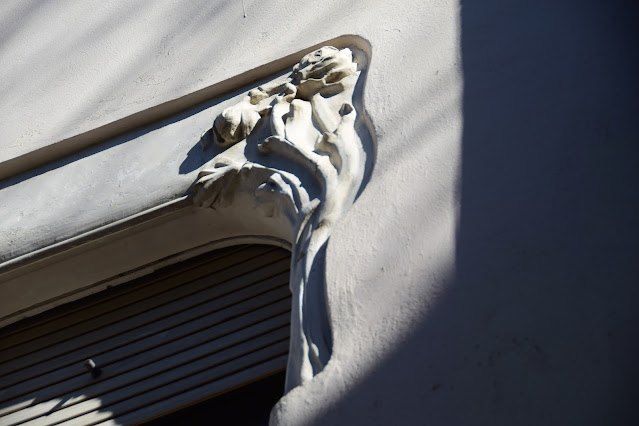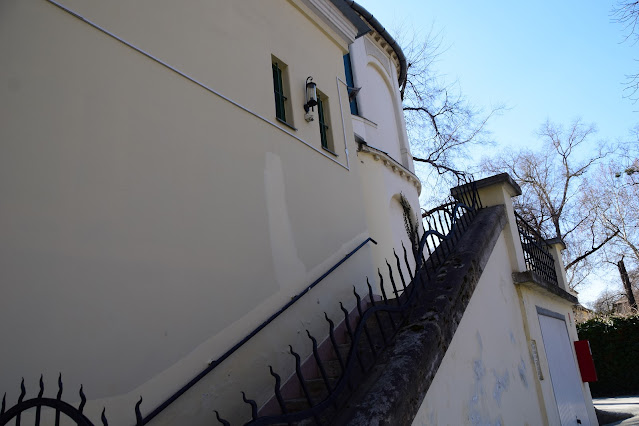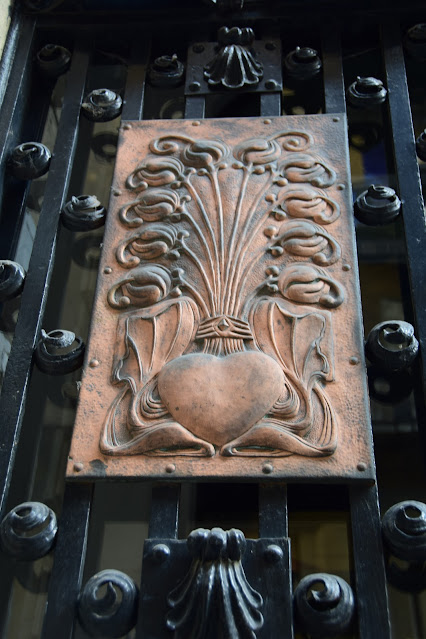Walking along the long street of Dozsa Gyorgy, I passed a building I had wanted to see the inside of for years. (See, for example, the last pictures on the post here.) It was built by Gyula Fodor in 1909.
The building has no central door, but if you turn down what seems like an alley on the right side of the house, you will find a door and above it a column of stained glass windows.



In all the years I walked past this building, I never saw anyone enter, which is kind of strange, as it turned out to be much larger than I had realized. This day, however, I saw a woman with shopping bags turning the key in the entrance door. I hurried up and asked if I could take a picture. "Yes," she said. And then she started telling me about the building. Not only did she speak English, but she was also very proud of the building, especially all the repairs, recently financed by EU money.
She pointed out various improvements, then asked if we would like to see the inside of her apartment. "Oh Yes, thank you" She and her husband had a premier apartment, in the front in the avant-corps adorned with stained glass and gorgeous etched glass doors. She said it had once been Fodor's own studio. She then invited to wander by ourselves around the building. We spent about half an hour, wandering around, trying to capture all the details. It was one of the most wonderful experiences of my Budapest-photo life. Here are some of the details.
From her apartment. Note the original stained glass windows and the original etched glass doors.





We then walked around the building, which turned out to be much larger than we had imagined. Notable details include the stained glass throughout the built.






Also interesting are the doors and the ornate and geometrical plaster embellishments.
The floor tiles and much of the railing and gate metal have been restored to their original design through EU funds.
One more big beautiful Fodor interior on this trip,
Napoleon udvar (which I wrote about earlier) was built on Hajos utca 25 between 1905 and 1906 and is one of Fodor's earliest buildings. A large apartment house built around a courtyard (udvar), it has a gorgeous exterior that promises an equally spectacular interior. It is, actually, the first Budapest house I was able to see inside. During my first visit, I hardly knew what I was looking at, but this time I looked more thoroughly.
Behind this beautiful door
one finds the Miksa Roth stained glass, tiles, plaster decorations that make Fodor's elegant buildings so beautiful--and expensive.
#FodorGyula
#DozsaGyorgyUt64
#NapoleonUdvar
#ArtNouveauArchitecture
#MiksaRoth
#GeroEsGero






































































